In its fight to protect the privacy of its users, Apple has decided to tackle email tracking and surveillance. The technique is simple and proven: download the images present in the emails in a cache before giving them back to the users of its Apple Mail application. But a few details are giving a lot of people cold sweats. Badsender makes a complete analysis of this new challenge for email marketers.
Updates :
- 28/09/2021 : addition of the replay of the live +maj release date
- 01/11/2021: update evolution adoption iOS15
- 12/29/2021: iOS15 and AMPP adoption progress update + typo fix
- 20/05/2022: update following the release of the MovableInk study
Our Live from 9/23/2021:
Table of contents
Introduction
There is an underlying movement that is taking hold in the (not so) small world of email marketing. This movement is the growing restrictions on email tracking and more specifically on tracking of opens.
Since December 2013, Gmail " cache "images contained in emails, in March 2018, it was Yahoo! that joined the movement. Not to mention a few other more confidential webmails and email clients that have made a specialty of protecting their users' privacy (Hey, ProtonMail...) or extensions allowing to block tracking (Ugly Email, PixelBlock, …).
Let's go back for a moment to the story of the "cache" of images. A cache in computer science refers to the "memory cache", which is a temporary copy of data to facilitate future access. When Yahoo! and Gmail cache images, it means that they download this data, store it on their own servers and then "serve" it to their webmail users. The main idea is to guarantee better security, as cached images can be scanned by an anti-virus program, for example.
These cached images block certain marketing uses:
- No geolocation : it is always the same IPs from Google and Yahoo! that download the original images
- No possibility to know precisely the opening environment (desktop version, mobile version, iOS vs Android, ...) on these two email address providers
We could also tell you a little bit about the end of third-party cookiesBut since it's a long story, we'll refrain. Because in fact, the real debate of the moment is the changes that Apple is making in Apple Mail with the arrival of iOS 15.
But before that, let's take a quick break to explain the tracking of email openings.
How are email opens tracked?
In order to calculate who opens an email, campaign management solutions introduce a so-called tracking pixel in the sent emails. This means that in each email, a small image of a square pixel is introduced. In the link of this image, we will find an identifier that allows us to know who is the recipient and what is the campaign in question.
When the recipient of the email opens it, the tracking pixel is downloaded at the same time as the images, which will send a "signal" to your campaign management tool. The latter will then know which email was opened, by which recipient, at which time, by which IP address and possibly by which user-agent (web browser, application, etc.).
This also means that if the images are not loaded (which happens for example in the Outlook application), your email router does not know that the email has been opened and cannot deduce any of the above mentioned information.
Apple "Mail Privacy Protection", what is it and why is it important for email marketers?
The June 7, in a press release and during the WWDC21 conference, Apple threw a very big stone in the email marketing pond:
In the Mail app, Mail Privacy Protection prevents the person sending the email from using web beacons to collect information about the recipient. This new feature prevents knowing when someone opens an email, and it hides the person's IP address, making it impossible to link it to their online activity or determine their location.
Okay. So what's going on that justifies generating hundreds of articles since this announcement? True to its strategy of championing privacy, Apple has decided with iOS15 to tackle (among other things) the protection of its users' emails.

Users will be able to choose between "Protecting your email activity" or... not! With such a vocabulary, it is likely that a large part of users will choose the first option.
Once the option is checked, Apple will activate a series of protections mainly targeted at the images contained in the email and the tracking pixels.
Two absolutely decisive pieces of information must be kept in mind to understand the extent of this evolution.
Caching is not necessarily done at the time of opening
Unlike Gmail and Yahoo!, Apple's cache won't necessarily download images upon opening. This is what worries everyone. In some cases, the images are downloaded at reception, in others... a little later... and in others, still, at the time of opening.
This means that for ALL users who have activated "Mail Privacy Protection" in Apple Mail, you will no longer be able to believe the open statistics in your email campaigns.
It also means that geolocation is impossible (as it is for Gmail and Yahoo!) and that you will not be able to distinguish between Mail Call on iPhone, iPad and MacOS.
If you want to learn more about the technical aspects of caching, please feel free to read this very thorough article by Justin Khoo on Freshinbox.
More than half of your recipients are affected
Apple Mail accounts for 57% of email opens internationally (May2022, https://emailclientmarketshare.com/), it is the most used email client ahead of Gmail at 29%. In May 2022, the "Apple Mail Privacy Protection" openings represent almost the totality of the Apple Mail openings.
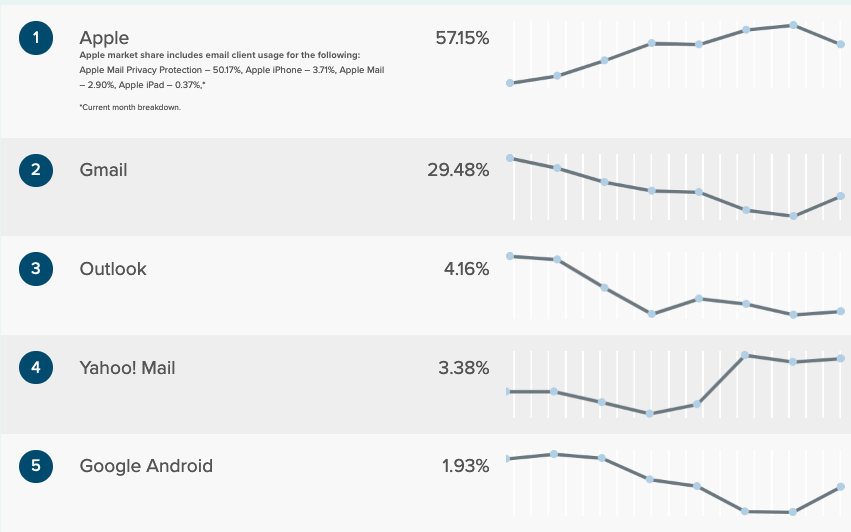
It's also worth noting that Apple Mail users use the app with all kinds of email addresses, not just Apple's iCloud. This means that the addresses gmail.com, outlook.com, yahoo.com that are in your databases can use Apple Mail and therefore be affected.
And when will this "cataclysm" happen?
iOS 15 was officially launched on September 20, 2021. The cataclysm is already here 😉
Two months after the launch of ios15, it surpassed iOS14 in number of installations. On May 20, 2022,iOS 15 installation rate represents 85%. Feel free to follow the evolution of iOS15 adoption via this report from Mixpanel : https://mixpanel.com/trends/#report/ios_15
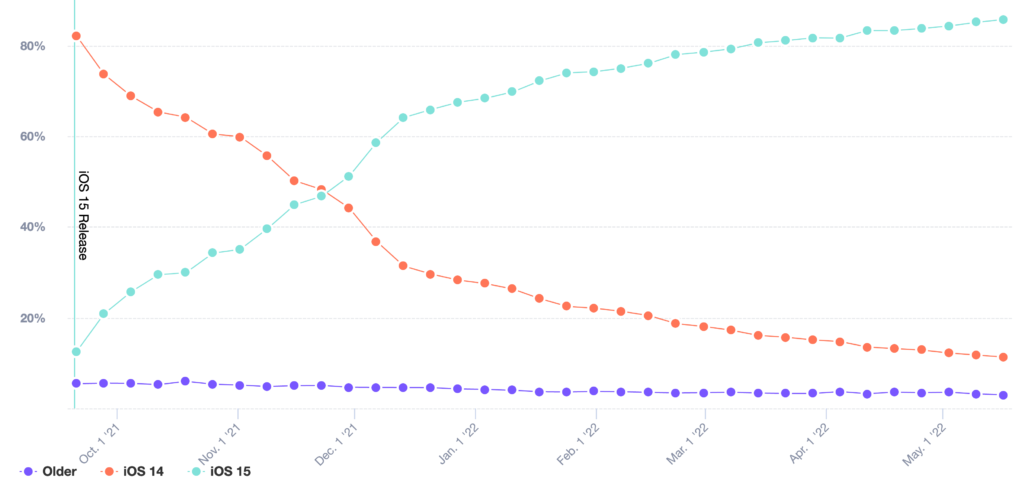
Is it really a cataclysm?
In October 2021, Movable Ink released a study "Movable Ink Research: Analysis of iOS 15 Content Caching" which was updated at the end of April 2022. The result of the study: for ~ 85 % of recipients of Apple Mail iOS 15 for which Mail Privacy Protection is enabled, the opening information returned to the routing tools is between real time and less than two minutes compared to other email clients.
Conclusion: don't we make a fuss over so little?
Methodology of the study
Movable Ink conducted an analysis on image opens and clicks in emails since September 20, 2021 to understand the differences between iOS 14 and iOS 15. For each user interaction, Movable Ink records the times (day, time, seconds) of opens and clicks.
Movable Ink has calculated the duration between the "open" and "click" events for each user. These durations represent the time elapsed between the moment the user views the email and the moment they click on it.
Need help?
Reading content isn't everything. The best way is to talk to us.
Results
| Deadline | Contacts iOS15 Apple Mail | Extrapolation to the global on a typical customer basis |
|---|---|---|
| < 2 minutes | 85% | 92% |
| From 2 to 21 minutes | 5% | 2,6% |
| From 21 to 144 minutes | 5% | 2,6% |
| > 144 minutes | 5% | 2,6% |
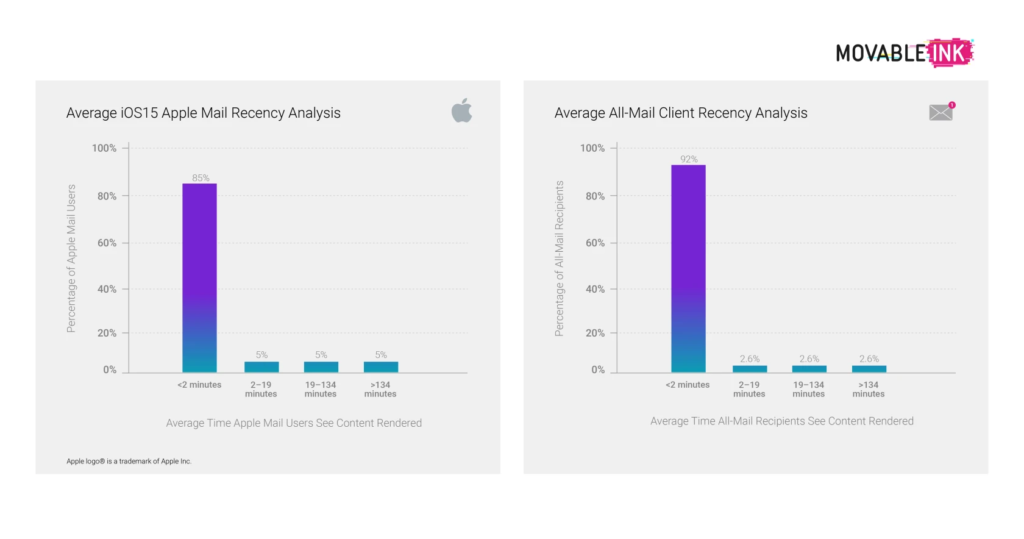
Will routers adapt?
Yes, some routers display the trackable open rate, i.e. "excluding" Apple Mail. Then they extrapolate the open rate by applying the trackable open rate to the total number of emails delivered.
How to manage the arrival of iOS15?
Evaluate the impact on your emailing strategy
Unfortunately, few CRM teams accurately assess their opening environments. As Marion explained in an articleThere is often confusion between the opening environments and the distribution of domain names. Campaign management platforms rarely offer precise figures on the subject. So don't hesitate to test a few campaigns with the analytics tools of Litmus or Email On Acid in order to know precisely the share of Apple Mail in your openings.
Following an analysis for our client J&Joy, we give you an example of Apple Mail open rate measurement in this article. Do not hesitate to ask us for a service of emailing advice if you wish to do the same.

Make your performance indicators evolve
"Opening rates, whether unique (opener rate) or not (open rate), but also responsiveness rates (CTOR or number of clicks to opens) are going to be largely skewed.
The most reliable indicator of raw email performance was already the level of clicks on delivered emails. This will be even more the case in the future. Also, if you still can't track your conversions directly in your campaign reports, it's time to invest.
Change your asset/asset segmentation
Being able to tailor pressure based on your recipients' level of engagement has been a priority for many of you in recent years. Unfortunately, you'll need to rethink your entire set of rules.
It is indeed quite classical to define a level of activity according to the date of last opening (openers 3 months, openers 6 months, ...). But if the opening rate is no longer reliable... we will probably have to move on to something else.
This remains THE BIG question. In my opinion, it is necessary to add a notion of clicks and web activity to be more accurate. The routing tools always capture the opening information from other environments. Normally, they have excluded from their stats the opening information coming from the iOS15 and Monterey environment.
The definition of dormant addresses often includes contacts who have not made an opening in the last 6 months. We can add: contacts who have never clicked in the last 12 months OR contacts who have not purchased in the last 24 months OR contacts who have not visited the website in the last 12 months. You may be surprised by the volume obtained. But isn't it a closer to reality?
Don't forget that after 6 months it becomes dangerous to reactivate those who have never interacted and see, either to test them with a validation/reactivation tool, or with an IP/domain configuration that has nothing in common with your mass mailings (just in case) and on a very specific message.
Modify your reminders and scenarios based on the opening
Non-releases are a classic for many advertisers who want to maximize the visibility of their messages. Whether it's for your "one-shot" emails or for your scenarios, you'll have to adapt your practices.
To go further: Do not hesitate to reread this article by Marion on email reminders
At the scenario level, it is important to list all triggers and filters that use opening events. For each of them, you will have to evaluate if an alternative is possible or if you can afford to leave it as is.
Transform your AB Test practices
If you are doing AB tests (I hope you are doing some, if not ask for a small email coaching) on your email objects, you probably use the open rate as a performance indicator. Now, that's debatable, but unless your router has set up a feature to eliminate virtual opens from Apple Mail, you'll have to fall back on click-through rate (yes, even for an object test ;-)).
This is also an opportunity to go a little further in your AB testing practices and do tests combining object and content variations.
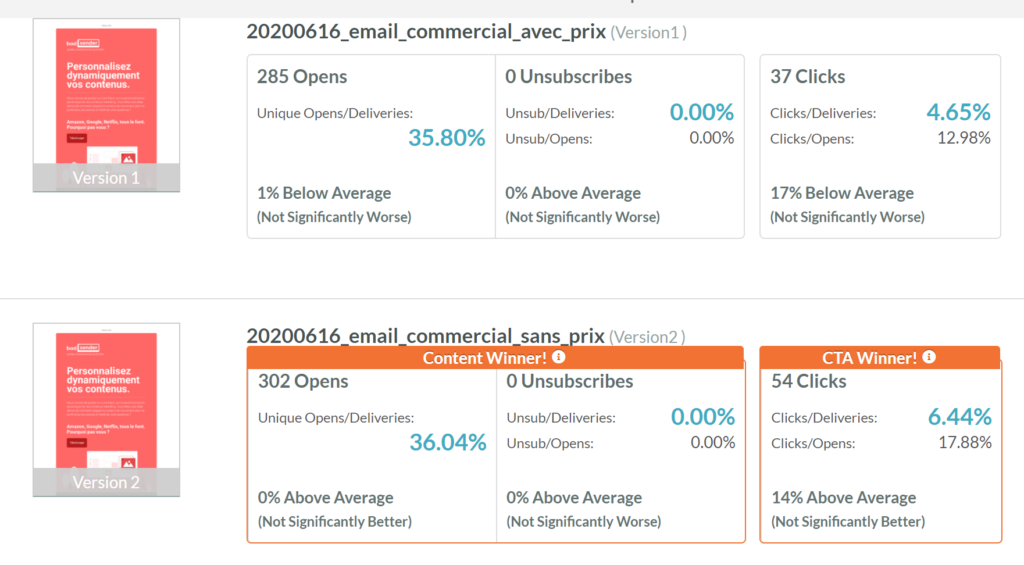
Modify your deliverability monitoring
In deliverability, one of the most important signals to detect that an email campaign ends up in spam with certain operators is to look at the open rate per destination (set of consistent domain names).
With these changes, this figure will become much less relevant. On the side of Apple domains (icloud, me.com...) we risk seeing a significant increase in opening rates. This increase will not be due to real openings and will prevent the detection of deliverability incidents by this means. On the other destinations, but to a lesser extent, the opening rates will probably increase, but in an unequal way.
You will have to fall back on other indicators, such as the various seedlist systems on the market.
Forget... or almost forget, real time in email
As we have seen above, we will lose geolocation opportunities in all emails opened via Apple Mail. This means that real-time weather, the location of the nearest store, ... will become impossible. If we add that it was already complicated for Gmail and Yahoo!, the interest of these techniques becomes very low.
The techniques related to the real time modification of an image (countdown, change according to the state of the stock, ...) will also become more complicated to exploit.
So when asked, should we still display a countdown timer in these emails? The answer is no. A good "LAST DAYS" is certainly just as effective.
But keep checking back as alternative solutions are being considered (but will partially exclude Apple Mail openers that will have a standardized version of the content).
Bypassing the protection?
As always in email marketing (thank you Outlook for educating us so well), the first reflex of the community is to test possible ways to bypass image caching in Apple Mail.
So we see many tests to validate if a background image hidden in CSS is a victim of caching like a normal image, if by using esoteric code, we can not divert attention from the cache, ...
These attempts, although interesting from a research and development point of view, are for me inappropriate.
On the one hand, because trying to circumvent the protections put in place by Apple will only reinforce their strategy and they will soon plug the holes.
Then, and this is more serious, you would be going against the user's choice. If he doesn't want to be tracked, if he refuses to give you his IP address, ... RESPECT!
Badsender helps you: Diagnose your messages!
In order to accompany you in these changes, Badsender offers you a diagnosis of the impact of the arrival of iOS15 on your email marketing strategy.
This diagnosis includes:
- An analysis of your openings on a campaign (maximum 100,000 openings) in order to know precisely the opening environment of your recipients (to know more, feel free to read this article)
- An analysis of the impact on your emailing strategy according to your practices.
- A report on the priorities and actions to be taken
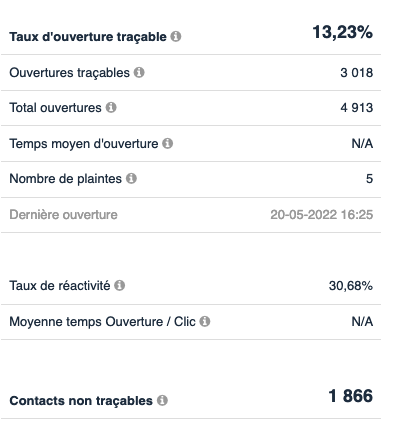
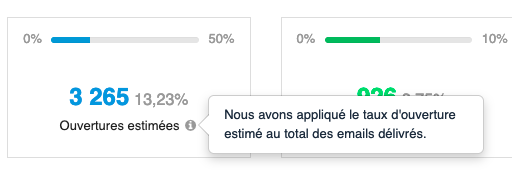
2 réponses
Hello, I'm wondering: email opens will no longer be identifiable when a recipient has Apple's Mail Privacy Protection enabled but you seem to indicate that clicks will continue to be identifiable. Is this metric not affected? Thanks 🙂
Hello Melanie,
Indeed, "for the moment" clicks are not concerned. It is mainly the openings that are less reliable than before.
Do not hesitate if you have any other questions.